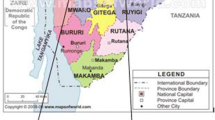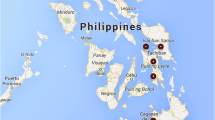Abstract
One way to maximize potential income of smallholder tree farmers is to ensure high quality of planting material. In San Carlos City, Negros Occidental, the Philippines, great importance is placed on seedling quality because Energy Crop Plantations (ECPs) managed under a Short-Rotation Coppice (SRC) system will involve a single planting for several three-year coppices. High seedling quality requires superior seed provenances and seedling propagation methods. Throughout the establishment of the nursery facility, and the propagation of planting stock, data collection, reporting and database systems have been designed to capture relevant costs and technical information. Training has been provided to nursery personnel and labourers to enable them to operate the nursery and produce high quality seedlings. This paper reports a practical operational evaluation of all materials and procedures followed in nursery establishment and seedling production. Economies of scale in nursery operation are achieved at a production level of at least 90,000 seedlings per planting season of three months in the year. The production cost is estimated at PhP 3.57/seedling, excluding the cost of the nursery infrastructure and overheads. Cost comparison with decentralized or contracted nurseries shows little variation at a total cost of PhP 4.12/seedling. However, with these alternative nursery arrangements there is high risk of producing low quality seedlings by possible reduction of inputs and skipping quality enhancement procedures to reduce production cost.






Similar content being viewed by others
Notes
Using small trucks will make transport cost per seedling unit high thus will exceed the budget, while too large trucks may not able to traverse local roads or difficult terrain to planting sites. In some case, buffalo-pulled carts are used to further transport and seedlings to planting areas and for infield transportation.
GENESYS has also been consolidating individual small-scale farmers to establish ECP and linking them with the market, i.e. the cogeneration plant. It provides seeds and technical assistance on nursery establishment and operation. It also prescribes the seedling production regime, and assists with plantation establishment, care and maintenance, and monitoring.
This is a rapid method of testing seed viability (1–2 days), applied when quick decision about seed purchase needs to be made. Seeds are soaked in the TZ solution, and if viable the radicle becomes bright red in colour.
An Excel spreadsheet is used for modeling the seedling production scheduling.
No seed importation is currently taking place. Imports will only be obtained when existing SPAs cannot supply all the required quantity of seeds.
The sturdiness Index (SI) is the height of seedling (in cm) divided by root collar diameter (in mm). Seedlings with SI 6 and below are accepted, while seedlings with SI more than 6 are considered low quality, and are discarded. Combined mortalities and downgrade are a maximum 10% per species. The average overall mortality and downgrade is about 4%.
Farmers are advised to provide sufficient manpower to plant one delivery load of seedlings. If there are seedlings unplanted on the day that they are delivered, farmers are advised to irrigate in the absence of rain and plant them the next day.
It seems to be a practice in Negros Island that a relatively low transport rate applies for a maximum distance of 50 km. For greater distances, the number of trips a truck can make per day is reduced and the freight charge increases substantially.
References
Abdula R (2006) Climate change policy of bio-energy: a computable general equilibrium analysis of its sectoral and land-use interfaces. Licentiate Paper, University of Gothenburg, Sweden
British BioGen/DTI (1999) Short rotation coppice for energy production. Good Practice Guidelines, London
Durst PB (1987) Energy plantations in the republic of the Philippines Res. Pap. SE-265. U.S. Department of Agriculture, Forest Service. Southeastern Forest Experiment Station, Asheville
Kadda AS, Segaran S, Tolentino NL (2005) Nursery establishment and management for Short Rotation Coppice (SRC) Plantations in Negros Occidental, The Philippines. GENESYS Foundation, Inc., The Philippines, EC-ASEAN Energy Facility, Jakarta, Indonesia, The Canadian Executive Service Organization (CESO), Philippine Business Advisory Project, Cebu City
Perlack RD, Wright LL, Huston MA, Schramm WE (1995) Biomass fuel from woody crops for electric power generation. Biofuels Feedstock Development Program, Energy Division, Environmental Sciences Division, US Department of Energy and Biomass Energy Systems and Technology Project, Winrock International, Morrilton
Segaran S, Tolentino NL, Kadda AS (2005) Short Rotation Coppice (SRC) and guidelines for future establishment of SRC plantations in Negros Occidental, the Philippines. GENESYS Foundation, Inc., The Philippines, EC-ASEAN Energy Facility, Jakarta, Indonesia, The Canadian Executive Service Organization (CESO), Philippine Business Advisory Project, Cebu City
Segaran S, Kadda AS, Tolentino NL (2006) Site assessment and selection for energy crop plantations in Negros Island, the Philippines. GENESYS Foundation, Inc., the Philippines, EC-ASEAN Energy Facility, Jakarta, Indonesia, The Canadian Executive Service Organization (CESO), Philippine Business Advisory Project, Cebu City
Tolentino EL (1989) Forest tree seed technology. Silviculture and forest influences. College of Forestry and Natural Resources, UPLB College, Laguna
Tolentino NL, Dela Torre CG, Kadda AS, Segaran S, Solis MRE, Zabaleta JX (2005) Results of study on growth and yield and coppicing capacities of Short Rotation Coppicing tree species at six different energy crop plantation trial sites in San Carlos City, Negros Occidental Province, the Philippines. GENESYS Foundation, Inc. Philippines, EC-ASEAN Energy Facility, Jakarta, Indonesia, The Canadian Executive Service Organization (CESO), Philippine Business Advisory Project, Cebu City
Author information
Authors and Affiliations
Corresponding author
Rights and permissions
About this article
Cite this article
Kadda, A.S., Venus, A.M., Lataza, D.B. et al. Operational Effectiveness of Centralized Nursery for Small-Scale Forestry in San Carlos City, Negros Occidental, the Philippines: Lessons Learned in Seedling Production for Commercial Energy Crop Plantations. Small-scale Forestry 7, 319–331 (2008). https://doi.org/10.1007/s11842-008-9063-1
Received:
Accepted:
Published:
Issue Date:
DOI: https://doi.org/10.1007/s11842-008-9063-1




